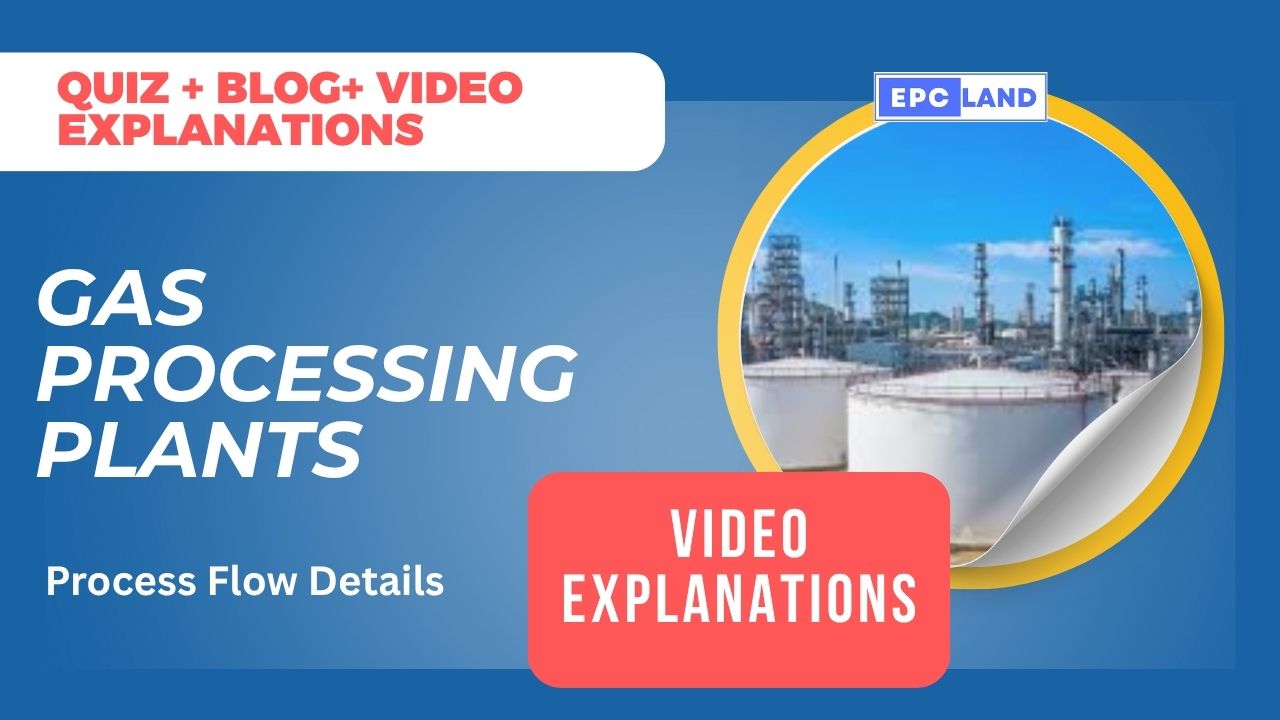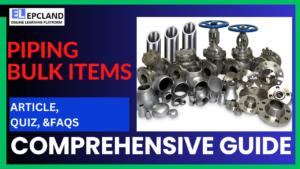Gas Processing: Unlock 10 Critical Insights
The journey of raw natural gas from the wellhead to usable products is a sophisticated feat of engineering. This complex gas processing path involves multiple stages designed to remove impurities, separate valuable components, and prepare the gas for market. Understanding these critical steps is essential for anyone involved in the industry. From initial separation of liquids to the intricate fractionation of natural gas liquids (NGLs), efficient gas processing ensures product quality, protects equipment, and minimizes environmental impact. This post delves into key aspects of gas processing through challenging multiple-choice questions derived from industry practices.
Table of Contents
- Introduction
- The Quiz Section: Test Your Knowledge on Gas Processing
- Major Takeaways
- Conclusion
- Check all Quiz Blogs with Video Explanations
🔷 Check the complete course on Piping Engineering
The Quiz Section: Test Your Knowledge on Gas Processing
Question 1: What is the primary reason for removing condensate and water from raw gas early in the gas processing sequence?
Question 2: Which common method is mentioned for removing acid gases like Hydrogen Sulfide (H₂S) and Carbon Dioxide (CO₂) during gas processing?
Question 3: What process is typically used in a sulfur recovery unit to convert Hydrogen Sulfide (H₂S) into elemental sulfur?
Question 4: Even after initial bulk water separation, why is a dehydration step necessary in gas processing?
Question 5: Why is Mercury removal important in gas processing, even in tiny traces?
Question 6: What is the primary reason for rejecting Nitrogen from the processed gas stream?
Question 7: What are Mercaptans, and why are they removed from NGLs during gas processing?
Question 8: Which technology is commonly used in modern plants for the NGL recovery stage of gas processing?
Question 9: A fractionation train in gas processing separates NGLs based on what principle?
Question 10: The diagram shows two main sales gas pipelines. What does this flexibility in gas processing signify?
📘 Explore all available courses on EPCLAND
Major Takeaways
- Effective gas processing begins with early removal of condensate and water to protect downstream equipment and processes.
- Acid gases like H₂S and CO₂ are targeted for removal during gas processing, often using amine treating, and H₂S can be converted to valuable sulfur via the Claus process.
- Dehydration and mercury removal are critical steps in gas processing to prevent equipment damage and operational issues like hydrate formation.
- Inert components like Nitrogen are removed from natural gas during gas processing to improve the heating value and reduce pipeline space requirements.
- Valuable Natural Gas Liquids (NGLs) are recovered through sophisticated techniques like turbo expansion as part of the gas processing sequence.
- A fractionation train is used in gas processing to separate mixed NGLs into individual, marketable products such as ethane, propane, and butane based on boiling points.
Conclusion
The path from raw wellhead fluid to clean, marketable products illustrates the complexity and precision involved in gas processing. Each stage, from initial separation of liquids and acid gases to the intricate recovery and fractionation of NGLs, is vital for ensuring safety, environmental compliance, and the creation of multiple valuable outputs. Mastering the principles behind these unit operations is key to optimizing gas processing facilities and meeting global energy demands efficiently.
📚 Check all Quiz Blogs with Video Explanations



